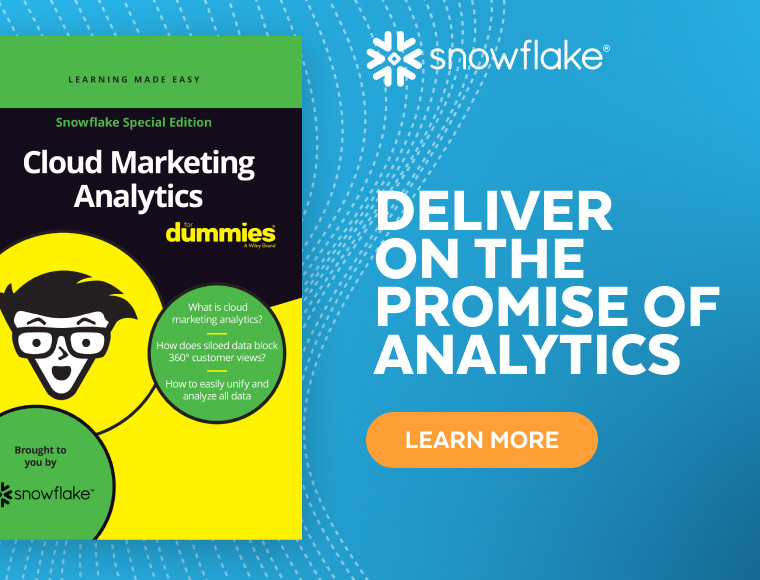Data-Driven Marketing
Data-driven marketing is a strategy that leverages marketing analytics to gain insights from customer data and optimize campaigns by identifying market trends. Data analytics enables you to see trends based on vast amounts of data from various sources — customer interactions and engagements, including reviews and customer support conversations, to name a few. You can then use the insights to plan, target, and personalize marketing programs, ultimately improving conversion rates.
Benefits of Data-Driven Marketing
Using data to better understand customer behavior enables marketers to make better decisions when planning and to measure and improve their strategies in real-time. Data can inform you of existing patterns as well as help you predict future trends. More specifically, data-driven marketing provides:
1. Clarity about customers
More customer data lends itself to more customer insights — insights about who the customers are, their behavior, and what they respond to. This clarity enables more effective marketing messaging.
2. Connection with target customers
A better understanding of your audience can help you deliver tailored experiences at scale, meeting customer expectations for real-time engagement based on their communication preferences.
3. Feedback about your promotion channels
In addition to informing you of your customers' who, data can tell you where — as in, which channels are most effective for reaching your target customer.
4. Personalization
Data makes it possible to personalize marketing campaigns, combining insights with information specific to each customer. A few examples of where customer personalization can be useful:
Direct mail
Email
Website in real-time
Marketing via social and digital channels
In-store marketing events
Ultimately, these benefits lead to an increase in customer lifetime value through personalization, an increase in speed to ROI by making your analytics teams more agile, smarter decisions based on predictive analytics, the ability to attract and retain data and analytics talent, and the ability to get ahead of information technology and regulatory compliance requirements.
Developing a Data-Driven Marketing Strategy
A strategy is essential for making the most of your data for marketing purposes. Your strategy should address these five key areas:
1. Objectives
Decide which users need access to what data, and for what purpose. Are they product managers working to improve customer experience, for example, or brand marketers who need to adjust messaging to quickly improve campaign performance?
It's also essential to establish how your campaigns' success will be measured, whether it's in terms of ad optimization, improved customer experience, increased margin, or something else.
2. People
To become genuinely data-centric, you may need to recruit data scientists and analysts who can distill insights from your data and IT managers to make customer data available to those individuals. Consider whether to create a centralized data team or distribute data scientists and analysts across different functions.
3. Technology
Identify which data sources you and your team require. Clarify how you will handle storage, security, and accessibility requirements to support intended data use cases. Lastly, decide whether you will build your customer data platform or buy an out-of-the-box solution to activate customer data. This choice will depend on your company's size, customer information complexity, and business priorities.
4. Operations
To keep dashboards and queries up-to-date based on your users' needs, determine what degree of data velocity to support. Suppose data is required to power customer experiences, such as personalized calls to action on your website. In that case, you also need to ensure that the serving infrastructure is production-grade so that uptime is comparable to that of the website's. You also need to set a strategy for making real-time data accessible with proper security and governance in place.
5. Integration
Is your CRM, ERP, point-of-sale, or supply chain data siloed and outside of your control? If so, address the feasibility and logistics of unifying different data types into one platform.
5 Key Data Sets for Marketers
The primary data a marketer should be looking at are those that define your audience — potential and existing customers. Here's where the data comes from.
1. CRM
Pulling in data from your CRM system (e.g., Salesforce) enables you to understand client behaviors and trends among your top accounts.
2. Marketing automation
Data from Hubspot or Marketo takes you one step back in the sales process so you can understand your customers' paths to purchase or conversion.
3. Paid media
Use the performance data from your paid media platforms' APIs to understand where your customers are coming from and what's influencing their decisions.
4. Loyalty and retention data
Load usage data, loyalty points data, and retention data into your data warehouse to understand what happens after sales or conversions — and identify your most loyal customers or brand champions who can evangelize your products and services.
Snowflake and Data-Driven Marketing
Snowflake Data Cloud simplifies the adoption of a data-driven marketing strategy and the utilization of marketing analytics to capture new trends in the market. By adopting this approach, marketers unlock significant advantages, such as gaining insights into customer journey trends and assessing cross-channel campaign performance using structured and semi-structured data sets. Get up-to-the-minute visibility into consumer behavior across channels, both pre-and post-purchase. A clear understanding of the consumer enables you to make informed strategic decisions more easily without digging deep with costly analysis to uncover insights. Acquiring third-party data sets from the Snowflake Data Marketplace can augment your internal data.
Being closer to the data puts you in the position to advocate your strategic positions. Fresher data yields better insights, and no data is fresher than the data accessed in real-time. By removing the time lag that results when pulling, analyzing, and loading data, you can see brand truth in the moment and gain ongoing visibility into your business and customer relationships.
